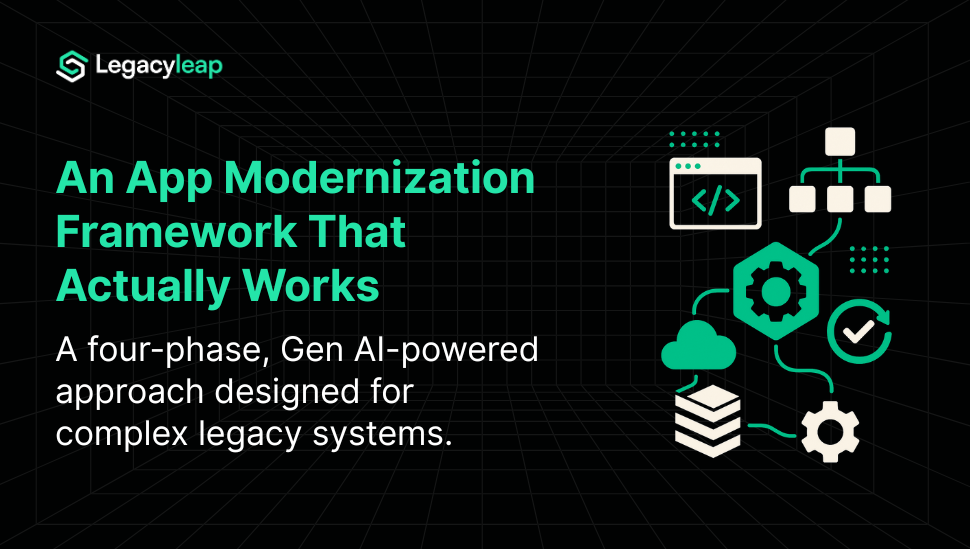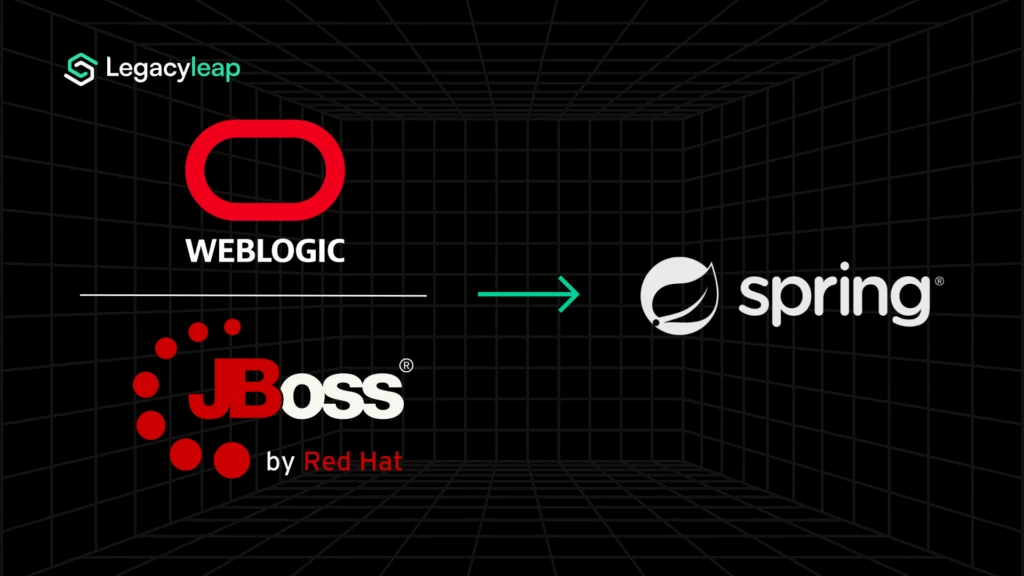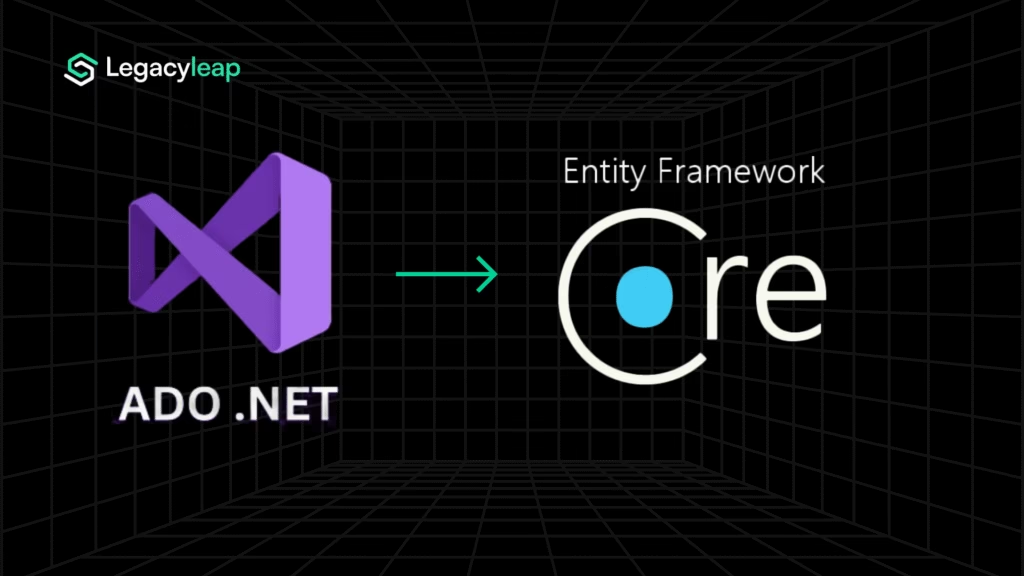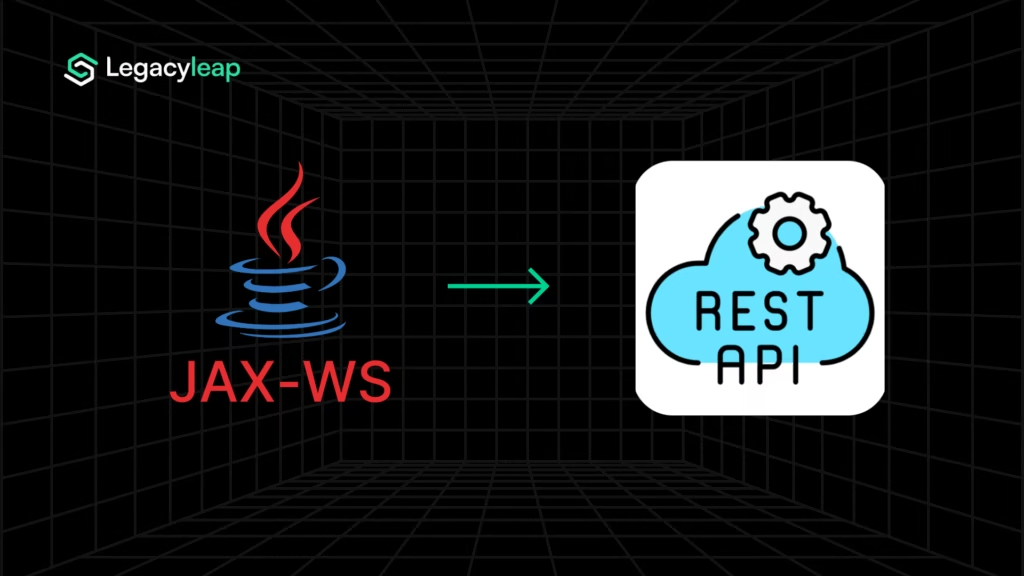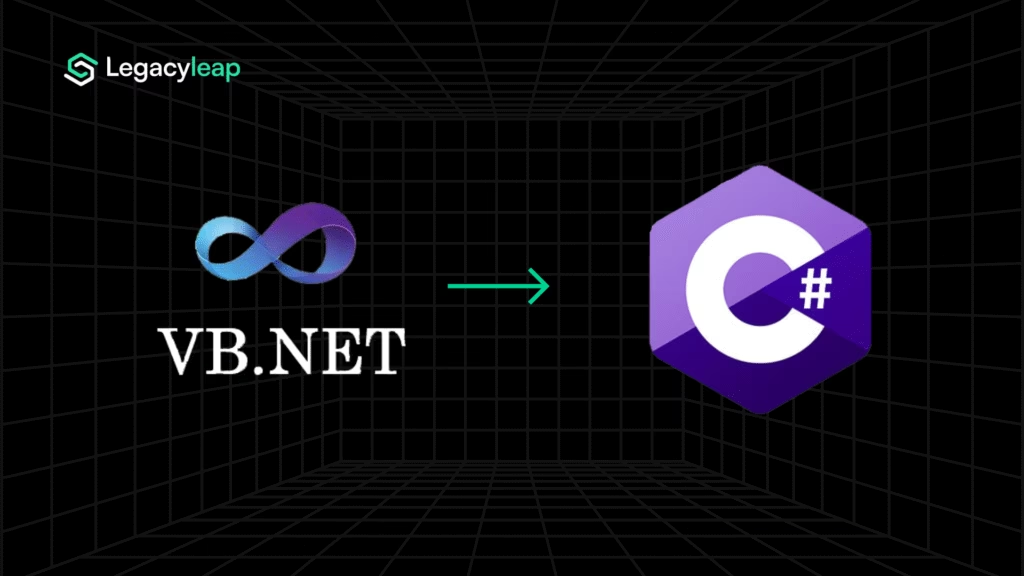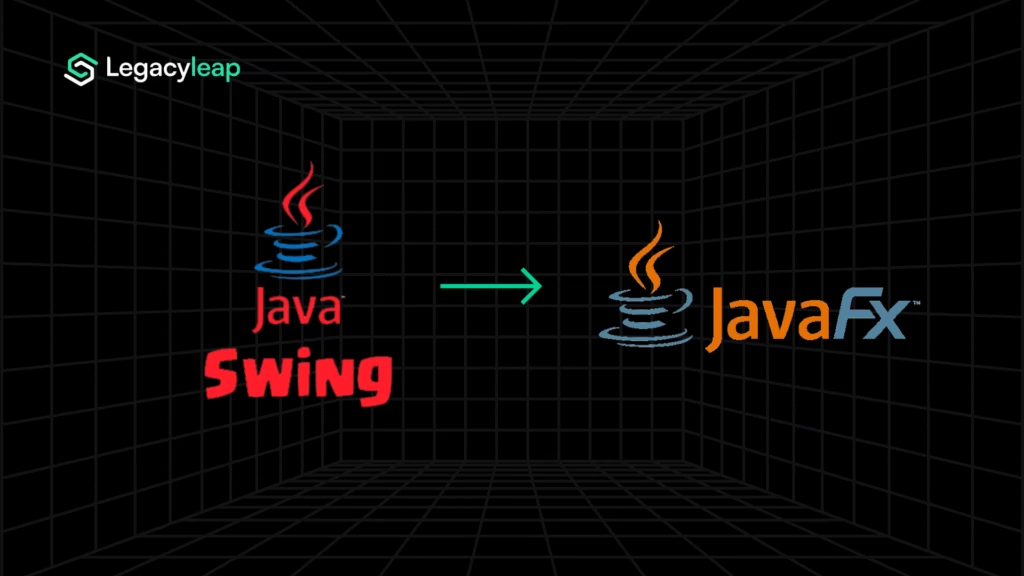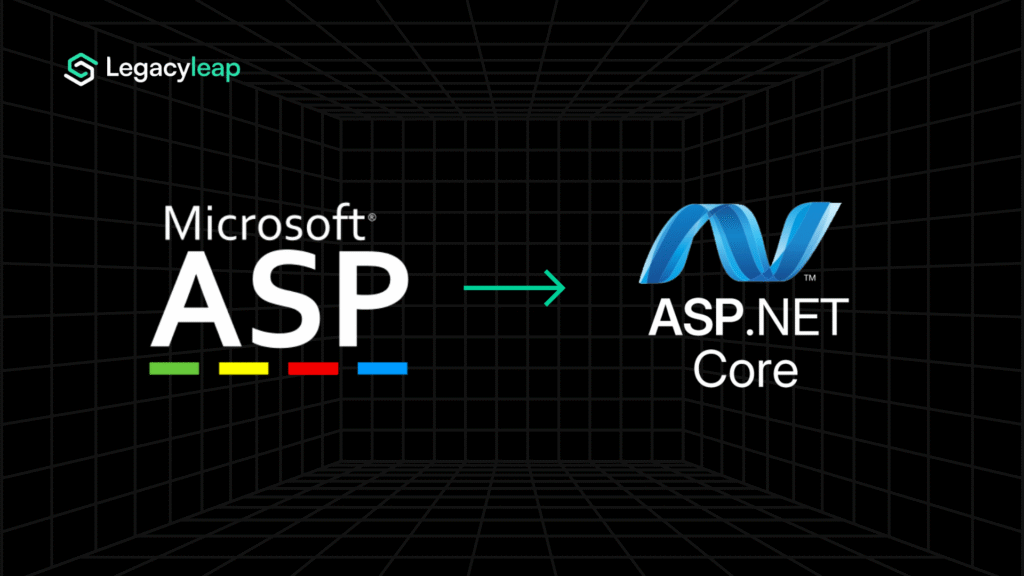Introduction
Most modernization efforts fail long before the first line of code is rewritten. Not because teams lack budget or intent, but because they don’t have a modernization framework. They jump straight to execution: choosing cloud providers, rewriting stacks, buying tools. All before truly understanding what needs to change, why, and in what order.
That’s the trap: mistaking motion for progress.
According to McKinsey, 70% of digital transformations fail to meet their objectives, often due to a lack of structured planning and clarity around outcomes. At the same time, Gartner (2023) reports that up to 80% of IT budgets are spent just maintaining legacy systems, leaving little room for innovation.
To modernize effectively, you need more than a to-do list. You need a structured approach that ties architecture to impact, and every decision to context. That’s what a true modernization framework delivers.
The Legacyleap Modernization Framework: Structure Over Speed
Most legacy modernization efforts fail because they jump into execution without structure. Code gets rewritten. Outcomes don’t improve.
This framework fixes that.
It’s built for high-stakes, legacy-heavy environments where dependencies run deep, logic is undocumented, and delivery can’t stop. Each phase is modular, measurable, and grounded in business impact.
Here’s how it works:
- Landscape Discovery – Understand the system as it is
- Strategy Mapping by Impact – Decide what to modernize and why
- Architecture & Execution – Modernize in-place, without breaking delivery
- Governance & Rollout – Deploy safely, monitor what matters

Phase 1: Landscape Discovery
You can’t modernize what you haven’t mapped. This phase builds a high-fidelity view of the current state — systems, logic, dependencies, and debt.
Key actions:
- Inventory all applications, modules, and integration points
- Map business logic and identify code smells or brittle components
- Auto-document architecture using relationship graphs and flow maps
Gen AI Advantage:
Gen AI dramatically speeds up codebase comprehension, tracing logic paths, surfacing hidden dependencies, and generating system maps in hours, not weeks.
Why this matters:
If you cannot see through the complexity clearly, you only modernize with assumptions, not intent.
Phase 2: Strategy Mapping by Impact
Modernization is a prioritization exercise. This phase turns understanding into action by mapping effort to impact.
Key actions:
- Score applications by technical risk, business value, and modernization effort
- Identify candidates for Refactor, Replatform, or Replace
- Create phased tracks that deliver ROI early and reduce risk
Gen AI Advantage:
AI models trained on the codebase can recommend modernization paths, estimate effort, and flag downstream dependencies, all based on live context.
Why this matters:
You can’t fix everything at once. This phase helps you modernize the 20% of the system that creates 80% of the drag, and build momentum from day one.
Phase 3: Architecture & Execution
With the right targets in place, this phase focuses on execution: defining where you’re going and how to get there without rewriting everything.
Key actions:
- Define target architecture: monolith decomposition, service boundaries, cloud-native design
- Launch modernization sprints using in-place refactoring or modular rewrites
- Blend human expertise with AI-driven suggestions to maintain speed and precision
Gen AI Advantage:
IDE-integrated copilots assist in real time, recommending refactors, flagging migration risks, and enforcing architectural patterns as developers work.
Why this matters:
Speed without structure creates chaos. This phase ensures modernization moves fast, without compromising on long-term maintainability or design integrity.
Phase 4: Governance & Rollout
Shipping modern code is easy. Rolling it out safely — and keeping it accountable — is where most teams stumble. This phase puts guardrails around every release.
Key actions:
- Build automated test coverage for legacy and modernized components
- Enforce quality gates for performance, security, and compliance
- Deploy iteratively using rollback-safe strategies (blue-green, canary, etc.)
Gen AI Advantage:
AI auto-generates test cases from legacy behavior, detects regressions early, and monitors service rollout health, closing the gap between deploy and confidence.
Why this matters:
Without governance, modernization becomes a one-off project. This phase makes it repeatable, measurable, and production-grade.
Also read: How to Build an Effective Application Modernization Roadmap.
Why This Modernization Framework Works at Enterprise Scale
Most modernization frameworks break down under enterprise complexity. They assume greenfield conditions, ignore delivery pipelines, or require top-down transformation that stalls real work.
Here’s why this one holds up:
- Modular by design: Each app, module, or service can be modernized independently across portfolios, without waiting for a full-stack overhaul.
- Zero disruption to delivery: Teams continue building features while modernization happens in parallel. No freezes, no forklift rewrites.
- Built for collaboration: Whether you’re in a CLI, IDE, or web UI, the framework supports collaboration across roles, from architects to devs to QA.
- AI-enhanced, human-owned: Gen AI augments judgment, not replaces it. It recommends. You decide.
- Time-to-value oriented: Designed to deliver meaningful modernization progress in weeks, not quarters.
Enterprise systems don’t need more processes. They need modernization that works in the real world, with the teams and codebases already in play.
How It Stacks Up Against Traditional Modernization Frameworks
Most legacy modernization frameworks were built for linear projects, not complex systems in motion. They assume full visibility, clean boundaries, and infinite time, which is exactly why they stall in enterprise environments.
Here’s how this framework compares:
| Area | Traditional Frameworks | Legacyleap Framework |
| Code Comprehension | Manual audits, tribal knowledge | AI-driven mapping of logic, dependencies, and relationships |
| Modernization Strategy | Fixed playbooks (Rehost/Rewrite) | Context-aware decisions: Refactor, Replatform, Replace per module |
| Execution Velocity | Sequential and heavyweight | Sprint-based, parallel, non-disruptive |
| Architecture Evolution | Set by architects, enforced top-down | Emergent and enforced via AI-assisted refactoring + guardrails |
| Tooling Integration | Siloed, consultancy-led processes | Unified IDE + CLI + Web UI for real-time developer engagement |
| Rollout Process | Big bang or static wave planning | Phased deployment with rollback-safe automation |
| Risk Profile | High — scope creep, downtime, missed dependencies | Low — phased execution, AI-mapped risk zones, test safety nets |
| Team Enablement | Centralized transformation office | Pod-level autonomy with AI copilots embedded in daily workflows |
Legacy frameworks assume a world where systems stop for transformation. This one assumes you can’t and builds around it.
Common Pitfalls We’ve Designed Around
Here’s where most modernization efforts break and how this framework is built to avoid each trap:
| Pitfall | What Usually Happens | How the Framework Solves It |
| Analysis Paralysis | Teams spend months mapping code and dependencies manually | AI auto-discovers logic, dependencies, and risk areas in hours |
| Architecture Drift | Designs live in slides, never enforced in actual code | IDE-level guardrails and AI-refactored boundaries keep code aligned |
| Overengineering | Scope balloons with “modernize everything” ambition | Focuses on the smallest valuable modernization units to ship early wins |
| Missed Dependencies | One hidden integration breaks five things downstream | Graph-based maps expose internal and external linkages automatically |
| Legacy Tooling Lock-in | Old systems can’t connect to modern CI/CD or developer workflows | Plugs into GitHub, VS Code, cloud pipelines, and developer portals |
Conclusion: Frameworks Aren’t the Goal. Outcomes Are.
Modernization isn’t a roadmap. It’s a series of high-stakes decisions about what to keep, what to change, and what to walk away from.
That’s why this framework isn’t a checklist. It’s a system designed for reality: messy legacy code, evolving teams, and live business pressure.
At Legacyleap, we’ve built this into our platform not just to plan modernization, but to make it executed, trackable, and scalable in real-world environments. From code understanding to service rollout, our tools embed into how your teams already work.
If you’re facing legacy friction, we’re not here to sell a strategy.
We’re here to show you how this works — with your own codebase — through a $0 modernization assessment.
Get in touch today to claim yours.

